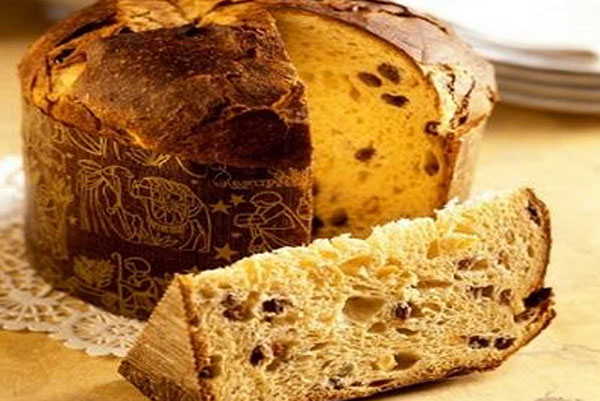
In the early 20th century, two enterprising Milanese bakers began to produce panettone in large quantities in the rest of Italy. In 1919, Angelo Motta started producing his eponymous brand of cakes. It was also Motta who revolutionised the traditional panettone by giving it its tall domed shape by making the dough rise three times, or almost 20 hours, before cooking, giving it its now-familiar light texture. The recipe was adapted shortly after by another baker, GioacchinoAlemagna, around 1925, who also gave his name to a popular brand that still exists today. The stiff competition between the two that then ensued led to industrial production of the cake. Nestlé took over the brands together in the late 1990s, but Bauli, an Italian bakery company based in Verona, has acquired Motta and Alemagna from Nestlé.
As a result of the fierce competition, by the end of World War II, panettonewas cheap enough for anyone and soon became the country’s leading Christmas sweet. Northern Italian immigrants to Argentina and Brazil also brought their love of panettone, and panettone is enjoyed for Christmas with hot cocoa or liquor during the holiday season, which became a mainstream tradition in those countries. In some places, it replaces the King cake.
In Argentina, Brazil, Chile (see: Pan de Pascua), Ecuador, Colombia, Venezuela, Bolivia, and Peru (known in Spanish as “Panetón” or “Pan Dulce”). Peru’s Antonio D’Onofrio, son of immigrants hailing from Caserta, Italy, spawned his own brand using the Alemagna formula, which he licensed along with the packaging style. This brand is now also owned by Nestlé and exported throughout Latin America. In recent years, Brazilian Panettonehave increased in quality and in popularity due to their low cost and abundance.
Italian bakers produce some 117 million panettone and pandoro cakes every Christmas — worth 579 million euros.